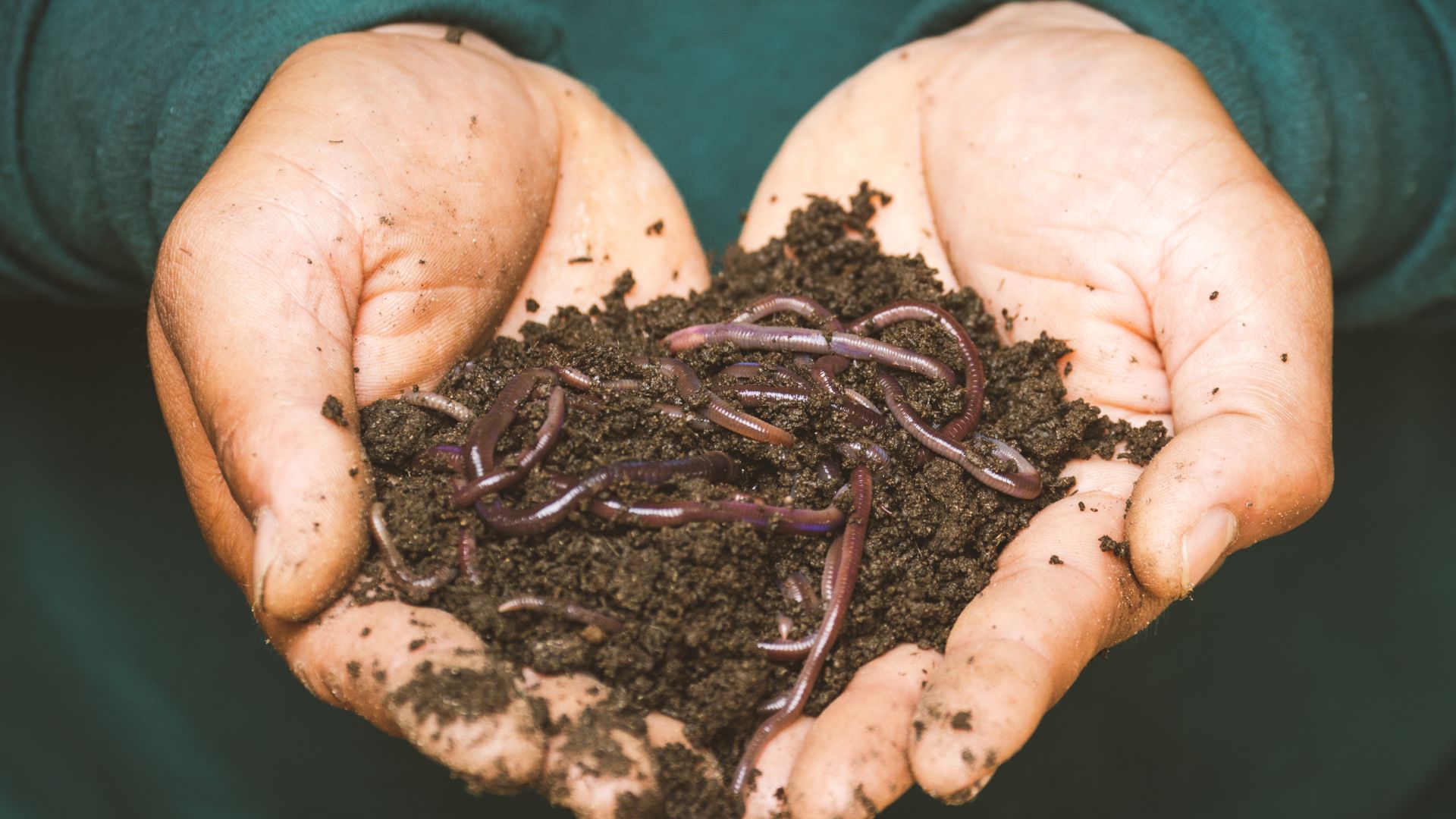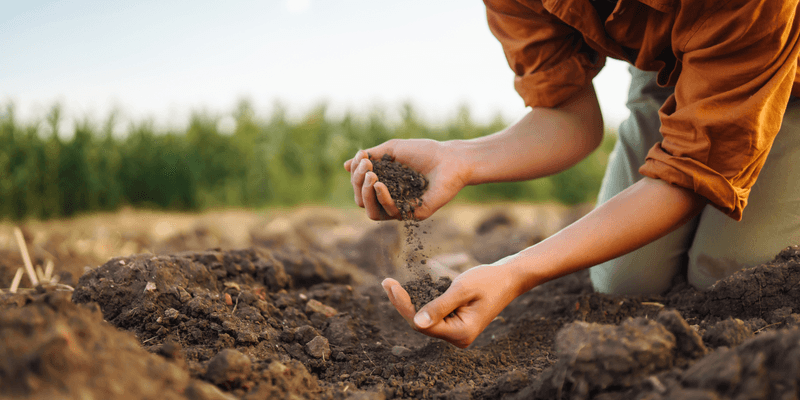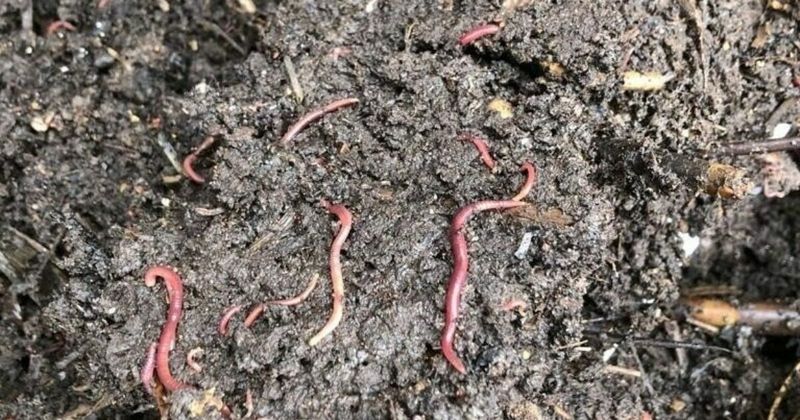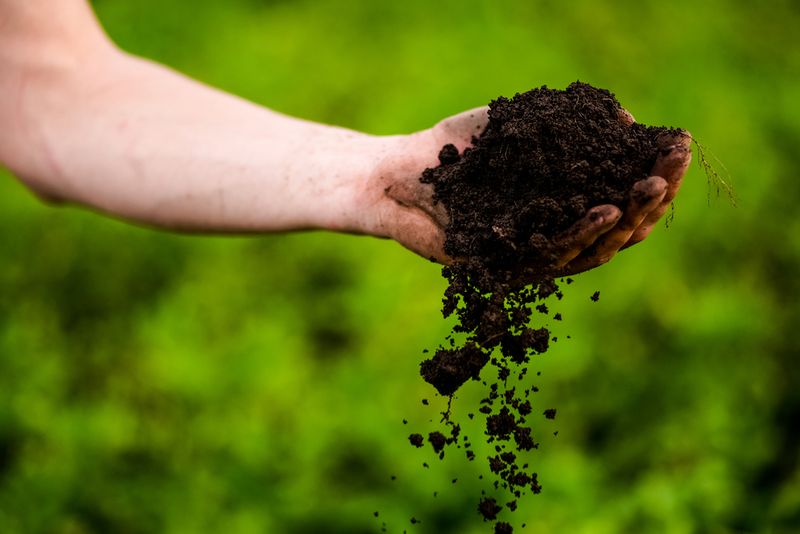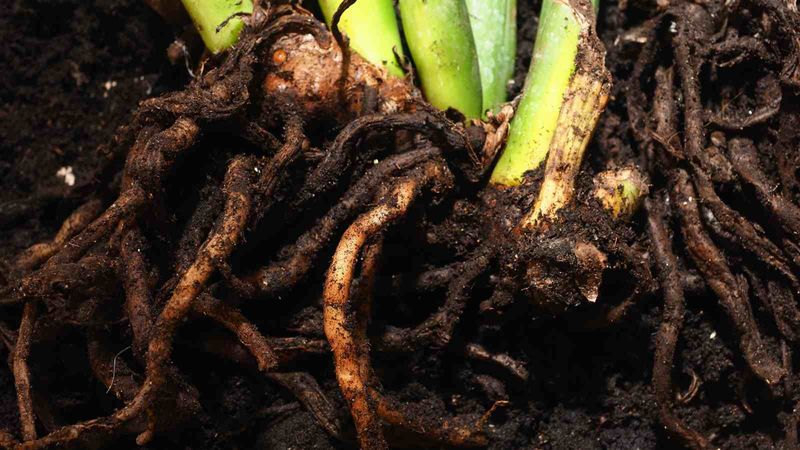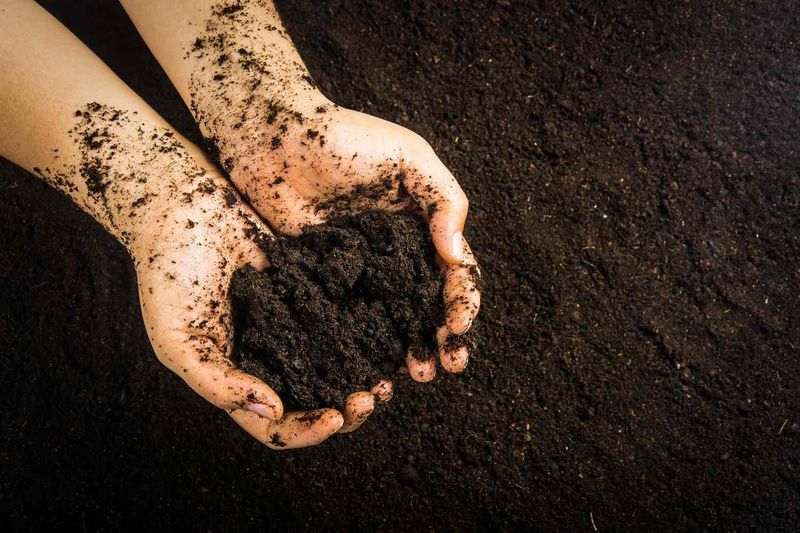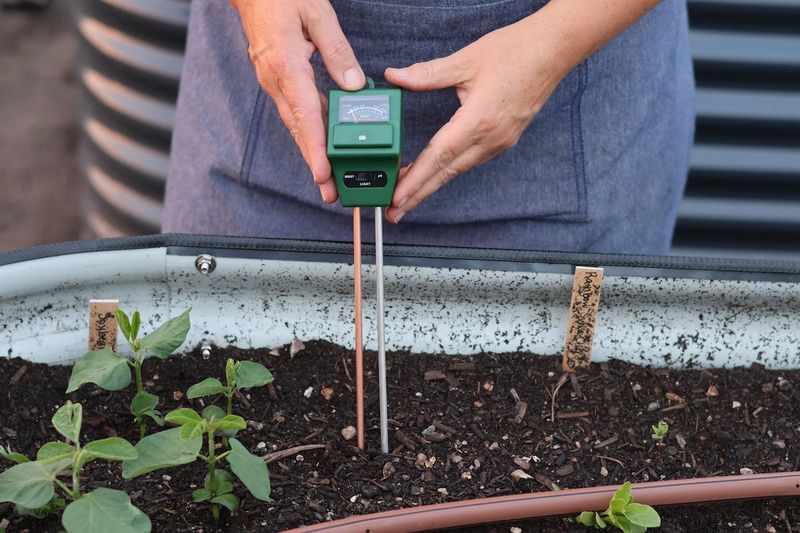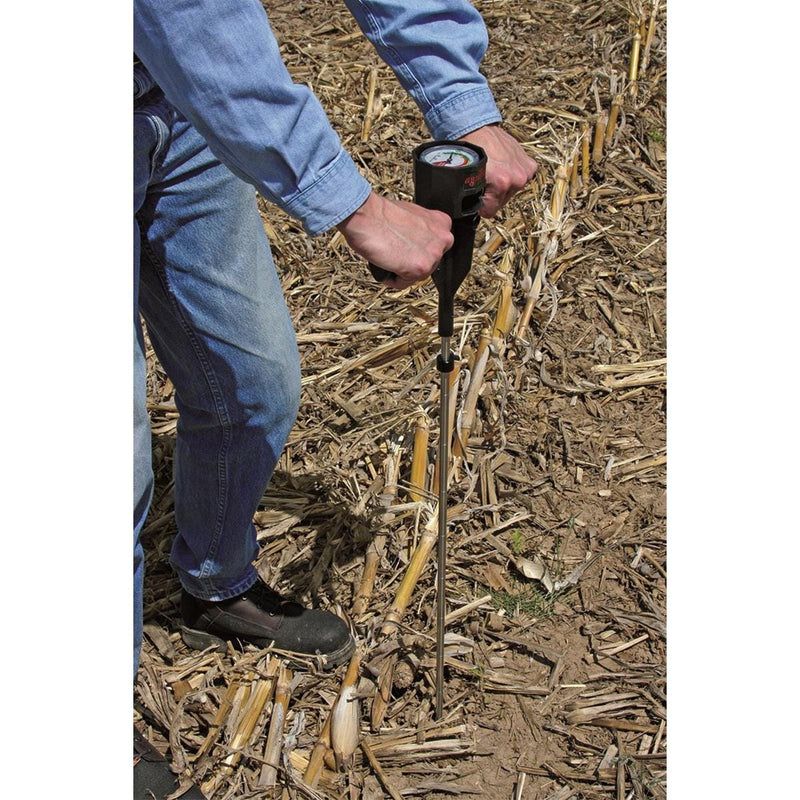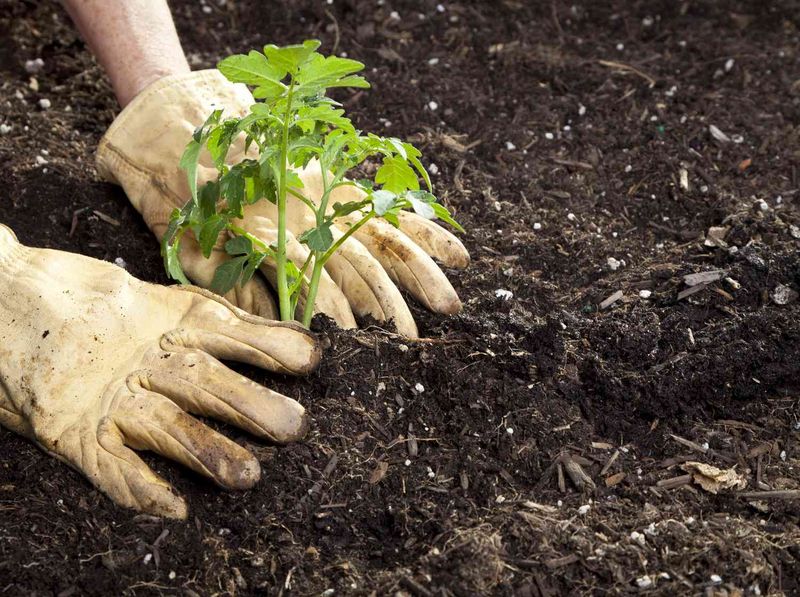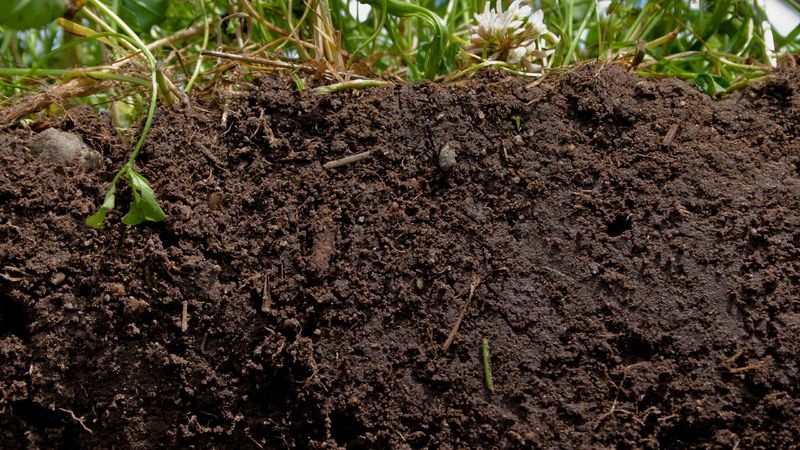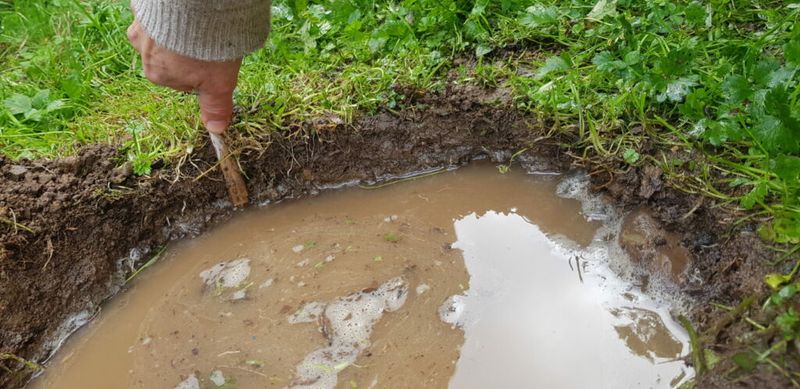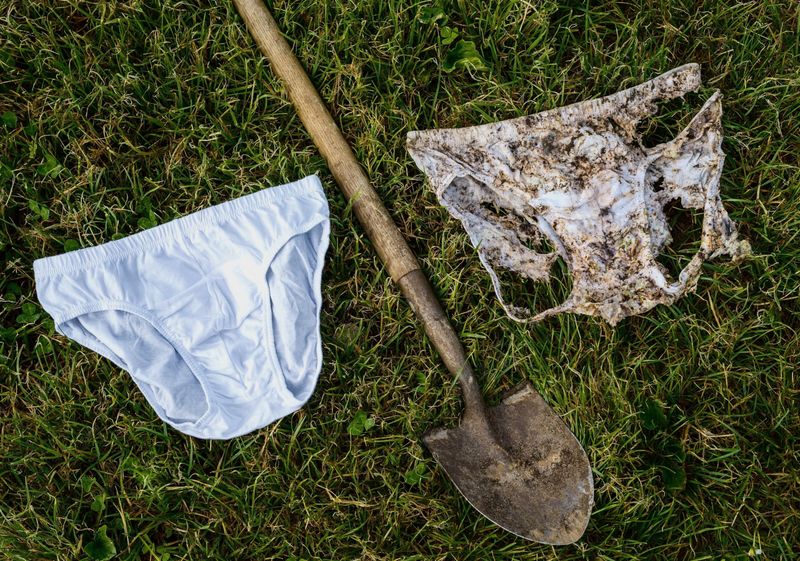If you love digging in the dirt as much as I do, you’ve probably wondered at some point—how healthy is my soil, really? The truth is, thriving plants start from the ground up, and knowing what’s going on beneath the surface can make all the difference in your garden’s success.
Over the years, I’ve picked up some fun and surprisingly simple ways to test soil health—no fancy lab required. We’re talking easy stuff like checking how your soil smells (yes, really), watching how water moves through it, and even the quirky-but-effective “underwear test.”
So, if you’re curious about how your garden’s foundation is doing, join me as we dig into the methods to check your soil’s health. These little insights can help you grow stronger, happier plants—and maybe even enjoy getting a bit muddy in the process.
1. Soil Structure
Feel the soil with your hands. A healthy soil should have a crumbly texture, similar to chocolate cake. If the soil easily clumps together into a ball, it may be compacted or clay-heavy.
Observe the mixture of particles. A blend of sand, silt, and clay indicates good soil structure. Too much of one type can limit soil’s ability to retain water and nutrients.
Dig a small hole and check if there are air spaces. These spaces should be visible, allowing roots to breathe and water to penetrate. Soil structure tells a lot about its health.
2. Earthworm Count
Take a small patch of soil and count the worms present. More earthworms usually signify healthier soil. They aerate the soil and break down organic matter, enhancing fertility.
Find a patch with organic material like dead leaves. This could yield more worms, indicating active decomposition. Fewer worms may mean poor soil quality or harmful chemical residue.
Earthworms are nature’s tillers, creating channels in the soil. They help improve water infiltration and nutrient cycling, so their presence is a good sign of soil health.
3. Water Infiltration Test
Pour water over the soil and observe how quickly it drains. Water should infiltrate steadily without pooling. If it takes too long, the soil may be compacted or have a high clay content.
Fast drainage can mean sandy soil, which might not retain enough moisture for plants. Aim for a balanced infiltration rate, which supports healthy plant growth.
Regularly testing infiltration helps identify changes in soil compaction. It offers a practical insight into soil’s ability to hold and supply water to your plants.
4. Smell Test
Grab a handful of soil and take a sniff. Healthy soil should smell earthy and fresh, a sign of active microbial life. A foul or sour smell could indicate anaerobic conditions or high chemical residue.
A pleasant aroma suggests good aeration and organic content. It’s a quick and reliable indicator of soil health that is often overlooked.
If the smell isn’t right, consider improving aeration and organic matter. Composting can help enhance the microbial activity, restoring that earthy fragrance.
5. Plant Root Observation
Carefully lift a plant to observe its roots. Healthy roots should be white and spread out evenly. Dark, mushy roots can be a sign of rot or poor soil drainage.
Look for a dense root network, which indicates the plant is accessing nutrients and water efficiently. Sparse or stunted roots might suggest compacted or nutrient-deficient soil.
Roots speak volumes about what’s happening underground. Regular checks can guide soil amendments to foster better plant growth.
6. Organic Matter Content
Mix some soil with water in a jar, let it settle, and observe the layers. The organic layer should be visible and prominent. Organic matter is crucial for nutrient supply and soil structure.
A dark, rich color often signifies good organic content. If this layer is thin, consider adding compost or mulch to boost soil fertility.
Organic matter is the lifeline of soil health, supporting microbial activity and plant nutrition. Keep it in balance for a thriving garden.
7. Soil PH Test
Using a pH meter or test kit, measure the soil’s acidity or alkalinity. Most plants prefer a pH between 6 and 7. An incorrect pH can limit nutrient availability.
Adjust pH using lime to raise or sulfur to lower it. Regular testing helps maintain optimal conditions for plant absorption.
Understanding soil pH is key to a successful garden. It affects everything from growth to pest resistance. Keep testing to ensure your plants get what they need.
8. Compaction Test
Push a metal rod or stick into the soil. It should penetrate easily. Resistance usually indicates compaction, restricting root growth and water movement.
Compacted soil often leads to poor plant performance. Aerating or loosening the soil can improve its structure and health.
Regularly check for compaction, especially in high-traffic areas. Keeping the soil loose will promote better air exchange and root development.
9. Soil Color Observation
Observe the color of your soil. Dark brown or black usually indicates high organic matter and fertility. Lighter colors might suggest sandy or low-nutrient soil.
Soil color offers clues about its composition and health. Check regularly to understand changes or needs for amendments.
A vibrant soil color is a visual indicator of life beneath the surface. Keep it rich and dark for a healthy, productive garden.
10. Microbial Activity Test
Mix soil with water in a jar, shake, and let it settle. Observe the bubbles forming. Bubbles indicate microbial activity, essential for nutrient cycling and soil health.
Microorganisms help decompose organic matter, releasing nutrients back into the soil. Their presence is crucial for a balanced ecosystem.
Maintaining high microbial activity ensures your soil remains fertile. Encourage it with regular compost additions and minimal soil disturbance.
11. Mulch Breakdown Observation
Examine the mulch layer on your soil. It should break down gradually, indicating active decomposition. Slow decomposition might suggest poor microbial activity or dry conditions.
Healthy mulch should integrate with the soil, enhancing its structure and fertility. If it’s not decomposing well, consider adjusting moisture levels or adding compost.
Mulch acts as a protective blanket, conserving moisture and suppressing weeds. Its breakdown provides tangible evidence of soil vitality.
12. Drainage Test
Dig a small hole and fill it with water. Observe the drainage rate. Water should disappear within a few hours. Slow drainage may indicate compacted or clay-heavy soil.
Proper drainage is vital for plant health, preventing root rot and other issues. It keeps the soil aerated and suitable for roots.
Regular drainage checks help maintain soil balance. Adjust soil structure and organic matter to improve poor drainage situations.
13. Underwear Test
Bury a pair of cotton underwear in your garden and leave it for a couple of months. Dig it up to see the results. Decomposition indicates healthy microbial activity.
If the underwear is mostly intact, your soil might lack biological life. Enhance it with compost or organic matter additions.
This quirky test provides a clear visual of your soil’s biological health. It’s simple and effective for understanding microbial presence and activity.
14. Moisture Level Check
Use a moisture meter to check soil water levels. Soil should neither be too dry nor waterlogged. Keeping the right moisture balance supports plant growth and microbial activity.
Regular moisture checks prevent over or under-watering, both of which can stress plants. Adjust watering habits based on meter readings.
Maintaining adequate moisture is essential for healthy soil. Monitor regularly to ensure optimal conditions for your garden’s needs.
15. Nutrient Deficiency Signs
Look for signs of nutrient deficiencies in plants, such as yellowing leaves or stunted growth. These often point to imbalanced soil nutrient levels.
Testing soil regularly can prevent deficiencies, keeping your garden thriving. Amend with appropriate fertilizers based on deficiency signs.
Understanding plant signals is vital for addressing soil health issues. Pay attention to these indicators to maintain a flourishing garden.

